
A pioneering African-American woman who used journalism to stand up against white supremacy and segregation and who led an anti-lynching crusade in the 1890s is celebrated on her birthday with a Google Doodle.
Ida B. Wells-Barnett would have turned 153 on July 16. She was a writer and editor, a suffragist and an early leader in the civil rights movement.
“We salute Ida B. Wells with a Doodle that commemorates her journalistic mettle and her unequivocal commitment to the advancement of civil liberties,” Google says.
Wells-Barnett is also known for her rally cry, “The way to right wrongs is to turn the light of truth upon them.”
Here’s what you need to know about Wells-Barnett:
1. She Was Born As a Slave in Mississippi Just Before Emancipation

Wells-Barnett was born into slavery in Holly Springs, Mississippi, in 1862, just before President Lincoln’s Emancipation Proclamation. She was her parents’ eighth child.
Her mother was a cook and her father was a master carpenter and both were slaves until they were freed by the proclamation. They were both interested in politics and were active in the Republican Party during the Reconstruction, according to a PBS profile of Wells. They died in 1878 in a Yellow Fever epidemic.
Wells-Barnett moved to Memphis, Tennessee, to live with her aunt. She then attended Rust College and became a teacher.
She was married to Ferdinand Barnett, a prominent Chicago attorney, in 1895. They had four children.
She died in Chicago of kidney disease in 1931.
Her Chicago home, where she lived with her husband from 1919 until 1929, is a National Historic Landmark. It is located at 3624 S. Martin Luther King Drive, but is a private residence and not open to the public, according to the National Park Service website.
2. She Refused to Give Up Her Seat to a White Man While on a Train in Memphis

In 1884, Wells-Barnett, then 22, was asked by a conductor on the Chesapeake & Ohio Railroad Company in Memphis to giver up her seat to a white man, according to article about her life posted on Duke University’s website. She refused.
She wrote in her autobiography:
I refused, saying that the forward car [closest to the locomotive] was a smoker, and as I was in the ladies’ car, I proposed to stay. . . [The conductor] tried to drag me out of the seat, but the moment he caught hold of my arm I fastened my teeth in the back of his hand. I had braced my feet against the seat in front and was holding to the back, and as he had already been badly bitten he didn’t try it again by himself. He went forward and got the baggageman and another man to help him and of course they succeeded in dragging me out.
Wells-Barnett successfully sued the railroad company, but her victory was overturned by the Tennessee Supreme Court. She had been awarded $500, but the higher court forced her to return that money and pay an additional $200 in damages to the railroad, according to the Mississippi Writers Page.
3. She Began Writing After the Incident on the Train & Led Anti-Lynching Crusades
After her experience on the train, Wells-Barnett began writing about race issues, civil rights and politics in the South, according to Biography.com. Her writing was published in several black newspapers and periodicals.
Wells-Barnett was fired from her job as a teacher because she openly criticized racism in the school system, according to her biography on the Ida B. Wells-Barnett House website.
She turned to journalism full-time and eventually became the editor and owner of the Memphis Free Speech and Highlight by the time she was 25. She was elected as the Secretary of the Colored Press Association in 1889 and earned the nickname the “Princess of the Press.” Her writing style was known to be simple and direct. She said in her autobiography, she “needed to help people with little or no schooling deal with problems in a simple, common-sense language.”
By the time she was 33, and living in Chicago with her husband, she was full owner of the Chicago Conservator, the city’s first African-American newspaper.
Wells-Barnett’s friend and two other black men were lynched in Memphis in 1892 while defending his store against an attack by whites. She expressed her outrage with his death and crusaded against lynching in editorials in her newspaper. Her friends then encouraged her to leave town, and while she was away, a mob destroyed her newspaper and threatened to kill her if she returned.
She wrote, that whites were using lynching, “to get rid of Negroes who were acquiring wealth and property, and thus keep the race terrorized.”
Her writing and European speaking tours helped bring international attention to the lynchings that were happening in the South.
You can read her 1893 article called Lynch Law here. She wrote in that article about how black men would be falsely accused of assaulting or attempting to assault white women:
The men who make these charges encourage or lead the mobs which do the lynching. They belong to the race which holds Negro life cheap, which owns the telegraph wires, newspapers, and all other communication with the outside world. They write the reports which justify lynching by painting the Negro as black as possible, and those reports are accepted by the press associations and the world without question or investigation. The mob spirit had increased with alarming frequency and violence. Over a thousand black men, women and children have been thus sacrificed the past ten years. Masks have long since been thrown aside and the lynchings of the present day take place in broad daylight. The sheriffs, police, and state officials stand by and see the work done well. The coroner’s jury is often formed among those who took part in the lynching and a verdict, “Death at the hands of parties unknown to the jury” is rendered. As the number of lynchings have increased, so has the cruelty and barbarism of the lynchers. Three human beings were burned alive in civilized America during the first six months of this year (1893). Over one hundred have been lynched in this half year. They were hanged, then cut, shot and burned.
Her 1894 pamphlet, Southern Horrors: Lynch Law in All Its Phases, which combined much of her research from 1892-1894, can be read here.
In 1898, after the lynching of the U.S. Postmaster of Lake City, South Carolina, she wrote to President William McKinley to call for a federal crime against the brutal and racist attacks,according to The Clarion-Ledger newspaper.
“Nowhere in the civilized world save the United States of America do men, possessing all civil and political power, go out in bands of 50 and 5,000 to hunt down, shoot, hang or burn to death a single individual, unarmed and absolutely powerless,” she wrote. “We refuse to believe this country, so powerful to defend its citizens abroad, is unable to protect its citizens at home.”
Despite her efforts, no federal anti-lynching law was ever passed by Congress.
4. She Helped Start Early Civil Rights Organizations
Wells-Barnett started some of the earliest civil rights organizations, including the National Association of Colored Women in 1896, according to Biography.com.
In 1908 she attended a conference for the organization that would become the National Association for the Advancement of Colored People and is considered one of the NAACP’s founders.
According to the National Park Service website, while she lived in Chicago, Wells-Barnett started the Negro Fellowship for men, the first kindergarten for black children and the first suffrage club for black women.
In 1913, during a march for universal suffrage in Washington, D.C., Wells-Barnett and other black women were told they would have to march in the back of the parade. After first refusing to take part, Wells-Barnett decided to position herself at the front of the parade at the last minute, standing alongside white male supporters of women’s suffrage.
She also helped elect Oscar Stanton De Priest, the first African-American alderman in Chicago history. She also ran for State Senate herself in 1930, a year before her death.





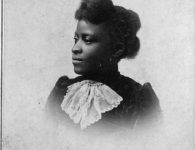

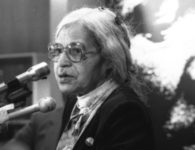
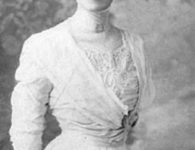
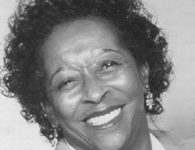

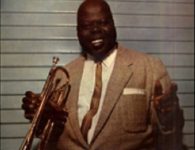

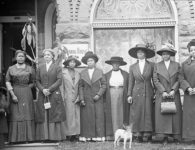
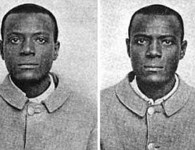
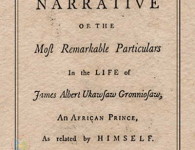

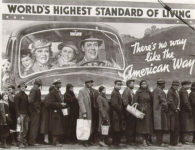
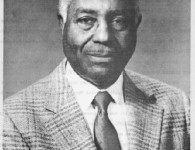


No comments